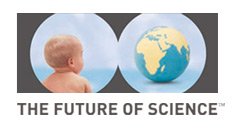Ilaria Capua

She is currently Director of the Virology Department and of the National, FAO/ OIE Reference Laboratory for Avian Influenza (AI) and Newcastle disease (ND) and of the Collaborating Centre for Diseases at the Human”“Animal Interface at the Istituto Zooprofilattico Sperimentale delle Venezie, Legnaro (Italy). During her career as a veterinary virologist she has been nominated OIE and FAO expert for AI and ND. She has been involved in managing several AI outbreaks on a global scale, and in particular her group has supported African and Middle Eastern countries affected by the H5N1 crisis. From 1997 to date she has been invited to give over 70 lectures as an international expert and as a guest lecturer at training courses in Europe, the US, Central and South America, Africa Australia and Asia. She has been awarded the Houghton Lecture award in 2005 and the Promed 2006 Award. In 2007 she was among the winners of the Scientific American 50 prize and in 2008 Seed's Revolutionary Mind, for leadership in policy for promoting sharing of information at an international level. From 1990 to date she has authored over 300 publications, predominantly on viral diseases of animals and zoonotic diseases including papers published in international refereed journals, papers and abstracts published in the proceedings of conferences, guest editorials, reviews, chapters of books and has co-authored two text books on avian influenza. Her lab is currently coordinating 2 EU ”“ funded projects, is a partner of additional 5 EU projects and is a WP leader in the EU Network of Excellence EPIZONE. Her group is involved in international activities funded by FAO and other international organisations.
The "One Health" vision to combat emerging infectious diseases
The emergence and spread of the H1N1 pandemic 2009 virus has once again raised the issue of diseases emerging from the animal reservoir with pandemic potential. Prior to the emergence of this virus, the animal and human health crisis caused by influenza viruses of the H5N1 subtype had polarised attention of international organisations and donors on the need for improved veterinary infrastructure in developing countries and on the need for improved communication between thehuman and animal health sectors.
Significant investments in capacity building have resulted in the development of diagnostic laboratories and in the improvement of scientific know-how in the field of diagnostic virology. It is known that the animal reservoir (including arthropods) is the source of the majority of emerging pathogens which threaten global public health and also that most emerging pathogens originate (or cross the species barrier) in developing countries. It would therefore seem reasonable for the international community to capitalise on the investments that have been made as a result of the avian influenza emergency and expand the areas of diagnostic competence, possibly on a regional basis, to set up early warning systems and improved response capacities to manage diseases of public health relevance. In particular the infrastructure and knowledge base generated for managing the avian influenza crisis could be a basis for the development of a reliable diagnostic capacity for zoonotic vetor-borne diseases such as West Nile Disease, Rift Valley Fever and for other highly lethal diseases such as rabies.
Possibly the biggest challenge we have is to find novel ways to maximise the use of the information which is generated as a result of the improved networking and diagnostic capacities. In the era of globalisation, emerging and re-emerging diseases of public health relevance are a concern to developing and developed countries and are a real threat due to the interdependence of the global economy. Communication and analysis systems available should be tailored to meet the global health priorities, and used to develop and constantly improve novel systems for the exploitation of information to generate knowledge, including a transdisciplinary approach between the medical and veterinary professions.





